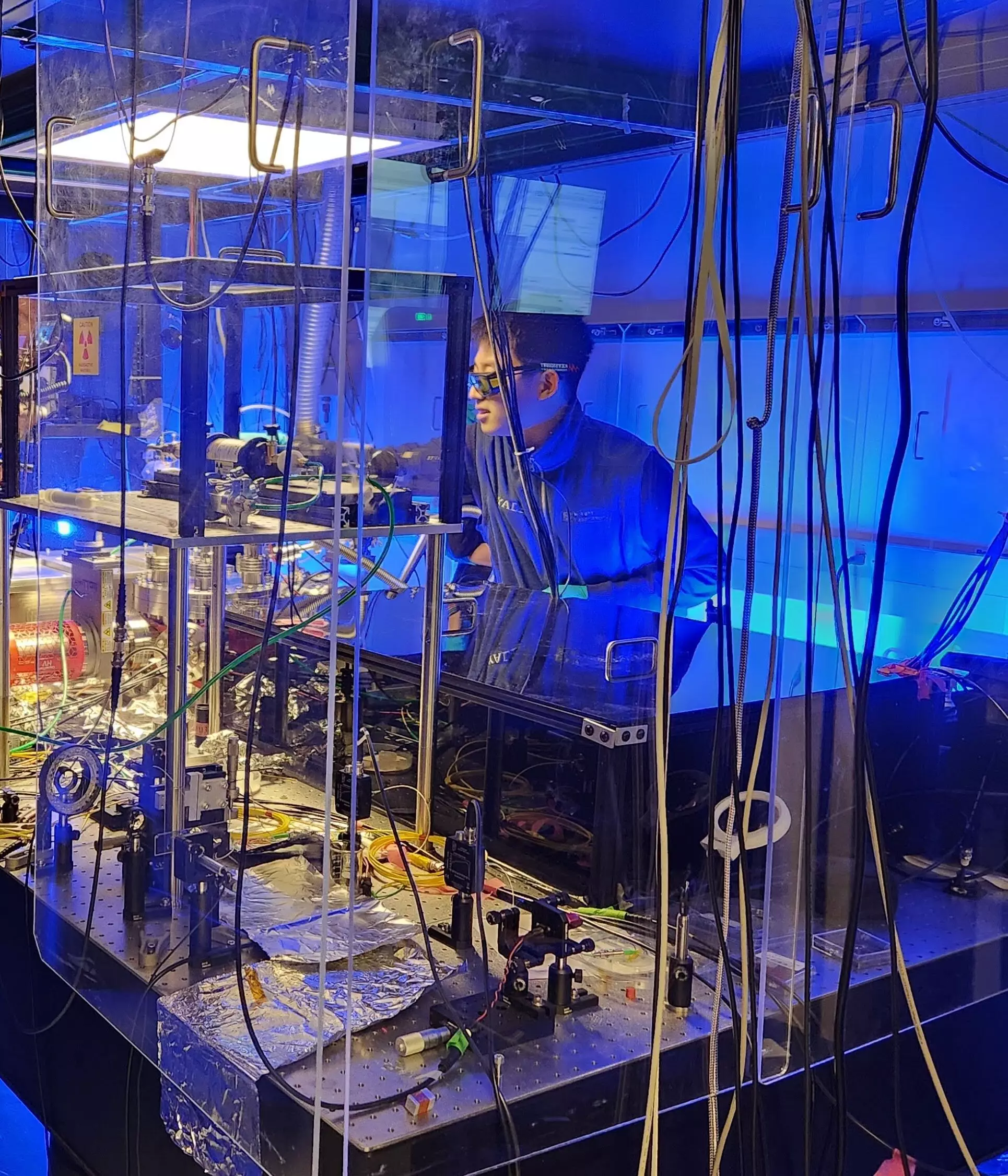In the fast-evolving landscape of physics, the quest for understanding the fundamental building blocks of nature has reached new heights, bolstered by advancements in technology. As pencil-thin beams of particles race through colossal machines like the Large Hadron Collider, the real breakthroughs often lie not in these grand instruments but in the meticulous development of smaller, more sensitive detectors. Recently, researchers from Yale University have made impressive strides in this field by introducing an innovative methodology designed to mechanically observe individual instances of nuclear decay – a pivotal process that underpins much of our understanding of atomic behavior and decay phenomena.
A Breakthrough in Observation Techniques
The intrinsic challenge surrounding the detection of nuclear decay lies in the elusive nature of the particles released during this process, particularly the neutral ones that evade existing detection methods. These particles could be the keys that unlock further secrets of the atomic world. Yale’s approach hinges on meticulously monitoring dust-sized particles embedding radioactive nuclei, where changes in electric charge signal the occurrence of decay events. Co-author David C. Moore, emphasizing the novelty of their work, stated, “Our sensitive micron-scale force sensors can detect the forces imparted by a single fundamental particle, like an alpha particle.”
This is not merely a reiteration of known methods; it’s a paradigm shift. By leveraging the interactions at a granular level, the research paves the way for capabilities previously thought unattainable, such as identifying and isolating neutral particles during decay events. In their early experiments, the team demonstrated the potential to observe nuclear decays with unprecedented accuracy, even for events as rare as one occurrence per day.
Implications for Quantum Research
The implications of this research extend far beyond the laboratory walls. The capacity to detect individual nuclear decays could influence various domains, from nuclear safety to exploring the illusive realm of dark matter. This engagement with fundamental particles could potentially answer questions that have baffled scientists for decades. Moreover, the newfound ability to monitor decay events might accelerate the pace of discovery surrounding exotic particles that play critical roles in theoretical frameworks of our universe.
Moore’s mention of extending their techniques to smaller nanoparticles suggests an ongoing ambition to explore the nuances of quantum phenomena. The prospect of detecting the momentum imparted by a single neutrino could profoundly impact our understanding of the interconnection between particles and pave the way for further developments in quantum mechanics.
A Growing Intersection of Technology and Fundamental Physics
The interplay between technological advancement and theoretical exploration illustrates a vital trend in modern physics. As researchers develop more refined instruments, they constantly redefine the boundaries of what’s observable. This burgeoning relationship promises to enhance our grasp of complex concepts like force, momentum, and energy transfer at the quantum level.
Yale’s research exemplifies how scientists can marry practicality with theoretical ingenuity, thus forging paths toward innovative applications in nuclear monitoring and addressing global challenges such as non-proliferation. By equipping themselves with tools that can detect even the most minuscule manifestations of physical processes, physicists are engaged in a critical dialogue that resonates throughout the scientific community.
The Future is Bright for Particle Detection
What’s clear from Yale’s groundbreaking work is that the frontier of particle physics is not merely a theoretical domain; it is rapidly becoming a tangible field as technological advancements forge ahead. New methodologies like the one developed by Moore and his colleagues not only enrich the scientific narrative but also lay foundational stones for future research efforts. Their pioneering techniques could ignite an era of discovery, unveiling secrets that lie at the core of atomic existence.
As we stand on the precipice of this new era in particle detection, it is invigorating to think about the possible breakthroughs waiting to be uncovered. The delicate dance of particles, with its myriad interactions and elusive behaviors, promises to yield insights that could challenge the very fabric of our understanding of the universe. The innovative spirit displayed by researchers at Yale illuminates a path forward, where rigorous scientific inquiry meets the avant-garde of technology, ushering in an exciting chapter in the study of nuclear decay.

